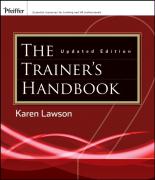
As workplace learning and development professionals, we spend most of our time improving the performance levels of employees and organizations. However, in order for us to stay current on the latest trends and resources we must continue to read and study on a regular basis.
It is for this reason that I created a book of the month club. each month I will introduce a workplace learning or performance book to read and discuss. A new book will be introduced the fourth Wednesday of each month. During the third Wednesday of each month, I will write a review and hope you join me in sharing your thoughts and opinions on each book. I will also include in future readings books that are both motivational and inspirational.
The first book that I have chosen is the Trainer’s Handbook.  It is a great book to start with since it serves as a comprehensive book on a variety of training topics which could benefit both new and seasoned workplace learning professionals. This book can be found on Amazon.com. Here is a description of the book on Amazon.com:
It is a great book to start with since it serves as a comprehensive book on a variety of training topics which could benefit both new and seasoned workplace learning professionals. This book can be found on Amazon.com. Here is a description of the book on Amazon.com:
The Trainer’s Handbook walks readers step by step through the training process and contains tips on assessing the needs of participants. Keeping training learner-centered, incorporating activities into training, selecting audiovisual aids, and closing sessions creatively. As practical as it is instructive, the guide is filled with worksheets, checklists, and assessments.
I am ready to start reading, How about you?






